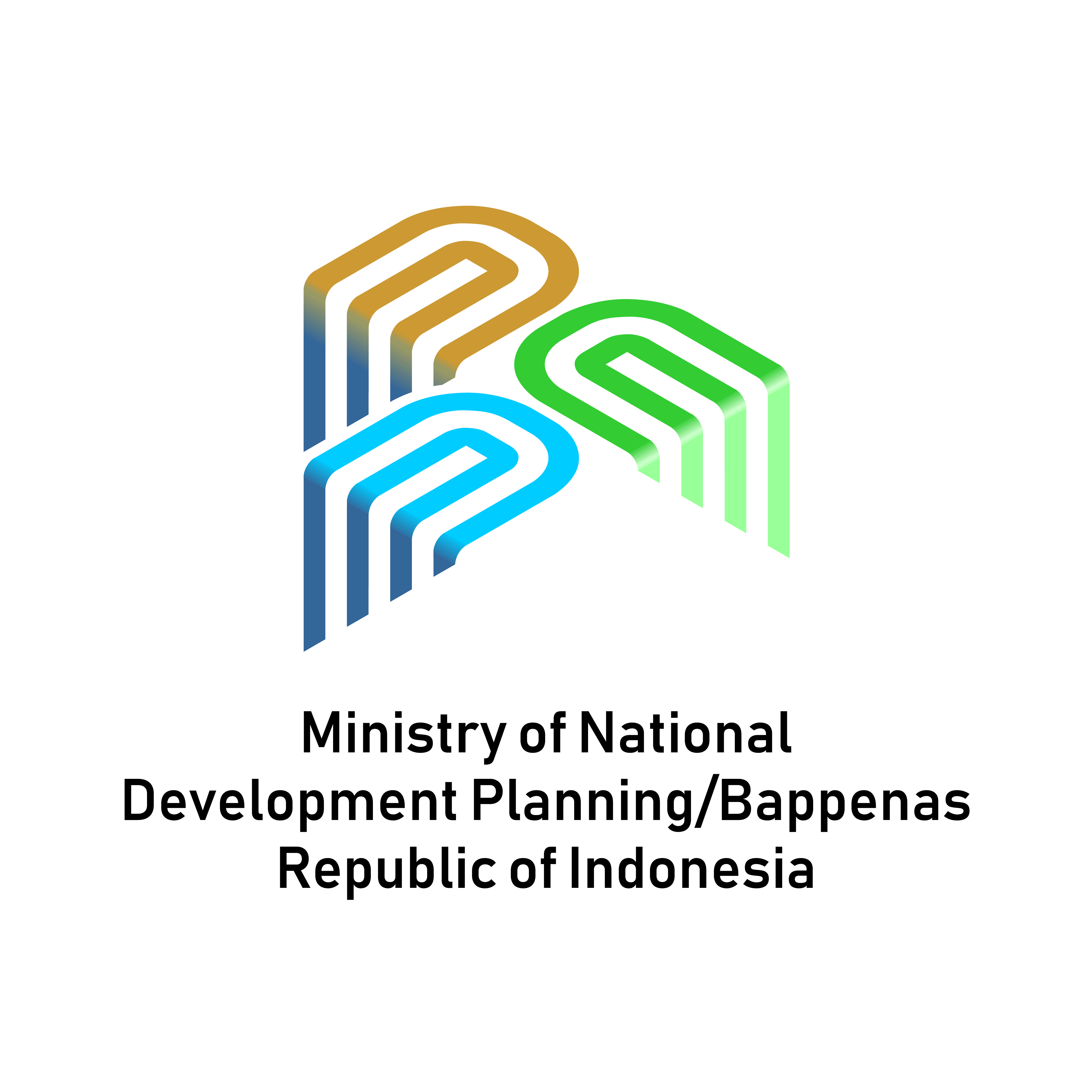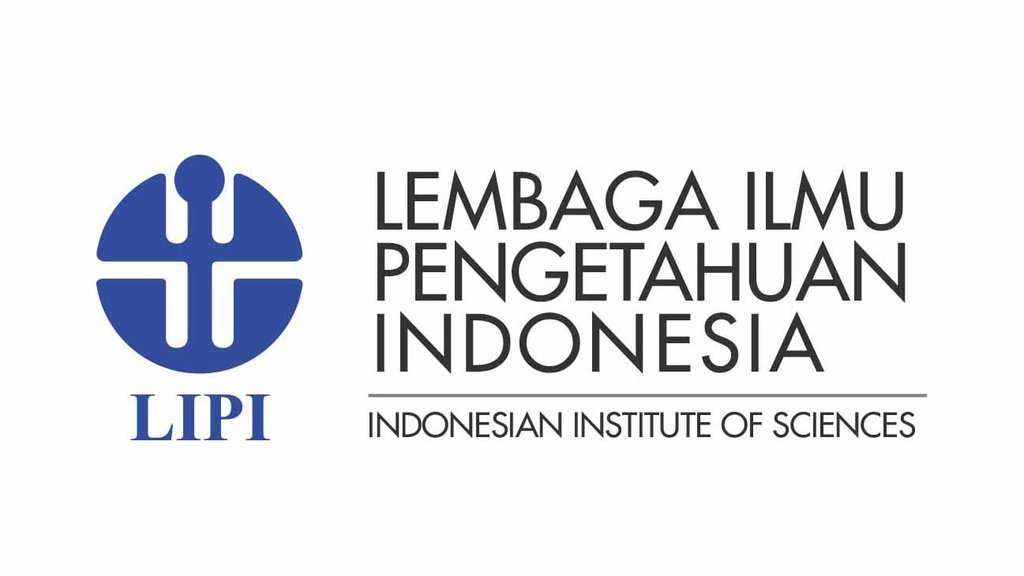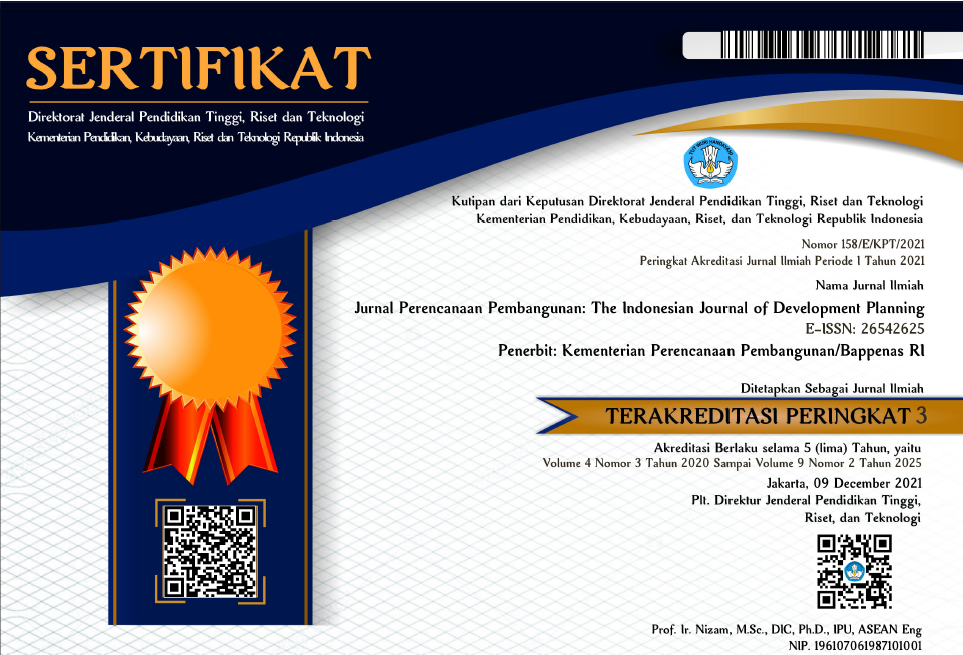The Role of Gender Equality on Poverty Alleviation: Case of Indonesia
DOI:
https://doi.org/10.36574/jpp.v7i2.450Keywords:
equality, poverty, gender development, dynamic panelAbstract
The Gender Development and Empowerment Index of Indonesia, which represents the equality between genders, has consistently fallen below the global average since 1990. This concerning trend gains significance given that half of the country's population is female. Relying on only half of the population for economic and developmental progress is suboptimal. Hence, fostering empowerment for all genders emerges as a potentially more effective strategy to catalyse economic growth and alleviate poverty across the nation. This study investigates how gender equality measures affect poverty at the regional level using dynamic panel data by system-generalised method of moments (system-GMM) technique on 514 districts in Indonesia spanning from 2014 to 2020. The result indicates that the Gender Development Index, characterized by a higher average score and lower standard deviation pronounces a more positive effect on poverty alleviation in comparison to the Gender Empowerment Measure. This can be attributed to the prevailing underrepresentation and limited participation of women in critical spheres such as the economy, higher-level management, parliamentary activities, and decision-making processes. Thus, there is a need to reinforce women's inclusion into formal positions and campaign for the participation of both genders in household chores and childcare to improve gender equality. Even small increases in the opportunities available to women and some release of cultural and political constraints can lead to significant economic and social benefits.
Downloads
References
Abekah-Nkrumah, G. (2013). Women's empowerment and household Health in Sub-Saharan Africa: Examining the Importance of Social Norms [Thesis]. The University of Manchester.
Adeleye, N., Osabuohien, E., & Bowale, E. (2017). The Role of Institutions in the Finance-Inequality Nexus in Sub-Saharan Africa. Journal of Contextual Economics, 137(1–2), 173–192. https://doi.org/10.3790/jce.137.1-2.173
Amory, J. D. (2019). Peranan Gender Perempuan dalam Pembangunan di Sulawesi Barat. Growth, Jurnal Ilmiah Ekonomi Pembangunan, 1(1), 1–15.
Aquirre, D., Hoteit, L., Rupp, C., & Sabagh, K. (2012). Empowering the Third Billion and Women and the world of work in 2012.
Arifin, S. (2018). Gender Equality and Economic Growth in Indonesia. Kajian, 23(1).
Bastos, A., Casaca, S. F., Nunes, F., & Pereirinha, J. (2009). Women and poverty: A gender-sensitive approach. Journal of Socio-Economics, 38(5), 764–778. https://doi.org/10.1016/j.socec.2009.03.008
Bond, S., Hoeffler, A., & Temple, J. (2001). GMM Estimation of Empirical Growth Models *.
Braido, L. H. B., Olinto, P., & Perrone, H. (2012). Gender Bias in Intrahousehold Allocation: Evidence from an Unintentional Experiment.
Ekbrand, H., & Halleröd, B. (2018). The more gender equity, the less child poverty? A multilevel analysis of malnutrition and health deprivation in 49 low- and middle-income countries. World Development, 108, 221–230. https://doi.org/10.1016/j.worlddev.2018.01.028
Espinoza-Delgado, J., & Klasen, S. (2018). Gender and multidimensional poverty in Nicaragua: An individual-based approach. World Development, 110, 466–491. https://doi.org/10.1016/j.worlddev.2018.06.016
Fialová, K., & Mysíková, M. (2021). Intra-household distribution of resources and income poverty and inequality in Visegrád countries. International Journal of Social Economics, 48(6), 914–930. https://doi.org/10.1108/IJSE-10-2020-0671
Findlay, J., & Wright, R. E. (1996). Gender, Poverty and The Intra-Household Distribution of Resources. In Review of Income & Wealth Series (Vol. 42, Issue 3).
Hastuti. (2014). Peran Perempuan dalam Pengentasan Kemiskinan di Desa Gabugan, Sleman, Daerah Istimewa Yogyakarta. Jurnal Ilmu-Ilmu Sosial, 11(2), 151–162.
Hausmann, R., Tyson, L. D., & Zahidi, S. (2006). The Global Gender Gap Report 2006. www.weforum.org
Ibnu-Shina, A. F. (2019). Pemodelan Kemisikinan di Indonesia dengan Generalized Method Momment Arellano Dan Bond. Varian, 2(2).
Iversen, V. (2003). Intra-household inequality: A challenge for the capability approach? In Feminist Economics (Vol. 9, Issues 2–3, pp. 93–115). Routledge. https://doi.org/10.1080/1354570032000080868
Klasen, S. (2004). Gender-Related Indicators of Well-Being [Georg-August-Universitat Goettingen]. http://www.iai.wiwi.uni-goettingen.de
Leow, K. W., & Tan, E. C. (2019). Determinants of poverty: A dynamic panel data analysis with controls for income level and inequality. Malaysian Journal of Economic Studies, 56(2), 227–242. https://doi.org/10.22452/MJES.vol56no2.3
Lubis, R. H., Napitupulu, R. M., & Izzah, N. (2022). The Role of Women in Improving Family Economy Amid COVID-19 Pandemic. JURNAL AL-QARDH, 7(1), 16–29. https://doi.org/10.23971/jaq.v7i1.3894
Made Astrama, I. (2022). Analysis of Gender Development and Its Impact on Economic Growth in Bali. Siwayang Journal: Publikasi Ilmiah Bidang Pariwisata, Kebudayaan, dan Antropologi, 1(1), 1–14. https://doi.org/10.54443/siwayang.v1i1.48
Malhotra, A., & Schuler, S. R. (2002). Measuring Women's Empowerment as a Variable in International Development.
McKinsey Global institute. (2016). The Power of Parity: Advancing Woman's Equality in the United States.
Mileva, E. (2007). Using Arellano-Bond Dynamic Panel GMM Estimators in Stata Tutorial with Examples using Stata 9.0 (xtabond and xtabond2).
Njuki, J., Eissler, S., Malapit, H., Meinzen-Dick, R., Bryan, E., & Quisumbing, A. (2022). A review of evidence on gender equality, women's empowerment, and food systems. Global Food Security, 33. https://doi.org/10.1016/j.gfs.2022.100622
Perrin, C., & Weill, L. (2022). No man, No cry? Gender equality in access to credit and financial stability. Finance Research Letters, 47. https://doi.org/10.1016/j.frl.2022.102694
Petrova, S., & Simcock, N. (2021). Gender and energy: domestic inequities reconsidered. Social and Cultural Geography, 22(6), 849–867. https://doi.org/10.1080/14649365.2019.1645200
Pintea, M. I. (2009). Female Labor Force Participation and Welfare if Status Conscious with Multiple Reference Groups. https://digitalcommons.fiu.edu/economics_wps/27
Rahayu, H. C., Sarungu, J., Hakim, L., Soesilo, A. M., Lestari, E. P., Astuti, D., & Retnaningsih, T. K. (2020). Dynamic Panel Data Analysis of Poverty in Indonesia.
Ramos, M. E., Gibaja-Romero, D. E., & Ochoa, S. A. (2020). Gender inequality and gender-based poverty in Mexico. Heliyon, 6(1). https://doi.org/10.1016/j.heliyon.2020.e03322
Ranabhat, C. L., Atkinson, J., Park, M. B., Kim, C. B., & Jakovljevic, M. (2018). The influence of universal health coverage on life expectancy at birth (LEAB) and healthy life expectancy (HALE): A multi-country cross-sectional study. Frontiers in Pharmacology, 9(SEP). https://doi.org/10.3389/fphar.2018.00960
Rapii, M., & Wahdatussopia. (2020). Pemberdayaan Perempuan dalam Pengentasan Kemiskinan Berbasis Program Pemberdayaan dan Kesejahteraan Keluarga (PKK). Jambura Economic Education Journal, 2(2), 80–89.
Roffia, P., Bucciol, A., & Hashlamoun, S. (2022). Determinants of life expectancy at birth: a longitudinal study on OECD countries. International Journal of Health Economics and Management. https://doi.org/10.1007/s10754-022-09338-5
Rosyadi, I. (2017). Identifikasi Faktor Penyebab Kemiskinan di Pedesaan dalam Perspektif Struktural. The 6th University Research Colloquium 2017, UMM, 499–511.
Rui, G., & Feng Ying, N. (2021). Does empowering women benefit poverty reduction? Evidence from a multi-component program in the Inner Mongolia Autonomous Region of China. Journal of Integrative Agriculture, 20(4), 1092–1106. https://doi.org/10.1016/S2095-3119(20)63436-0
Saediman, H., Aisa, S., Zani, M., Limi, M. A., & Yusria, W. O. (2019). Food Security Status of Households in a Cassava-Growing Village in Southeast Sulawesi, Indonesia. Journal of Agricultural Extension, 23(1), 199–209.
Samtleben, C., & Müller, K. U. (2022). Care and careers: Gender (in)equality in unpaid care, housework, and employment. Research in Social Stratification and Mobility, 77. https://doi.org/10.1016/j.rssm.2021.100659
Sihombing, P. R., & Arsani, A. M. (2021). Static and dynamic panel models: Which is better? (Case study: Poverty data in Indonesia 2012-2019). IOP Conference Series: Earth and Environmental Science, 739(1). https://doi.org/10.1088/1755-1315/739/1/012057
Situmorang, H. (2022, April 6). Kesetaraan Gender di Indonesia Belum terbentuk. Investor.Co. https://investor.id/national/289776/kesetaraan-gender-di-indonesia-belum-terbentuk
Stachura, P., & ?leszy?ski, J. (2016). Gender indicators of the United Nations Development Programme, Economic and Environmental Studies (E&ES). Economic and Environmental Studies, 16(4), 511–530. http://hdl.handle.net/10419/178932www.ees.uni.opole.pl
Statista. (2022). Percentage of GDP contributed by female workers as of 2015. https://www.statista.com/statistics/523838/women-share-of-gdp-region/
Statistics Netherlands. (2009). Gender Empowerment Measure. https://www.cbs.nl/en-gb/news/2009/27/dutch-women-among-the-most-emancipated-in-europe/gender-empowerment-measure--gem--#:~:text=The%20Gender%20Empowerment%20Measure%20(GEM,and%20senior%20officials%20and%20managers.
TNP2K. (2015). Perencanaan Penanggulangan Kemiskinan Berbasis Data Mempertajam Intervensi Kebijakan. in Rapat Kerja Teknis TKPK Tahun 2015.
Triananda, V. (2016). Analisis Partisipasi Perempuan pada Bidang Pendidikan dan Kesehatan terhadap Pemberantasan Kemiskinan di Jawa Timur [Graduate Thesis]. Universitas Brawijaya.
Wandaweka, A. T., & Purwanti, D. (2021). Determinan Partisipasi Kerja Perempuan dalam Sektor Informal di Indonesia Tahun 2019. Seminar Nasional Official Statistics.
UNDP. (2020). Gender Inequality Index. https://hdr.undp.org/data-center/thematic-composite-indices/gender-inequality-index#/indicies/GII
UNDP. (2023a). Gender Development Index (GDI). https://hdr.undp.org/gender-development-index#/indicies/GDI
UNDP. (2023b). Frequently Asked Questions: The Gender Inequality Index (GII). https://www.undp.org/sites/g/files/zskgke326/files/migration/tr/faq_gii.pdf
United States Agency for International Development. (2012). Ending Child Marriage & Meeting the Needs of Married Children: The USAID Vision for Action. USAID From the American People, 1, 300. https://www.usaid.gov/sites/default/files/documents/2155/Child_Marriage_Vision_Factsheet.pdf%0Ahttp://pdf.usaid.gov/pdf_docs/PDACU300.pdf
USAID. (2022). A Briefer: Gender Inequality Causes Poverty. https://banyanglobal.com/wp-content/uploads/2021/03/Gender-Inequality-Causes-Poverty-Briefer.pdf
World Bank. (2020). Labour force participation rate (% of the population). https://genderdata.worldbank.org/indicators/sl-tlf-acti-zs?age=15-64&geos=WLD_USA_CHN_IDN_THA&view=trend
Downloads
Published
Versions
- 2023-09-01 (2)
- 2023-08-31 (1)
How to Cite
Issue
Section
License
Copyright (c) 2023 Jurnal Perencanaan Pembangunan: The Indonesian Journal of Development Planning

This work is licensed under a Creative Commons Attribution-NonCommercial-ShareAlike 4.0 International License.
This is an open-access article distributed under the terms of the Creative Commons Attribution-NonCommercial-ShareAlike 4.0 International License. Copyright © Kementerian PPN/Bappenas RI


















